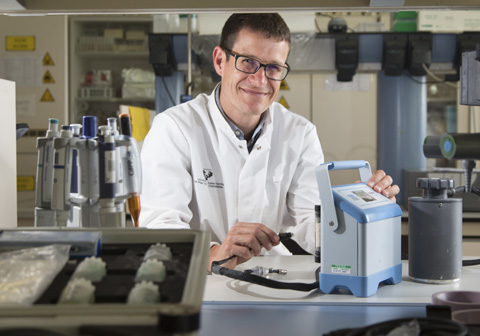Members of the Department of Plant Biology and Ecology of the UPV/EHU’s Faculty of Science and Technology, together with researchers from the Institut national de recherche en sciences et technologies pour l’environnement et l’agriculture (IRSTEA) of France and collaborators from over 22 countries have studied the influence of intermittent waterways on waterway CO2 emissions on a global level. The results have been published in the prestigious Nature Geoscience journal and suggest that intermittent waterways make a significant contribution towards CO2 emissions into the atmosphere.
-

Euskal Herriko Unibertsitateak ikasturteari hasiera emateko ekitaldia egin du
-

45.000 ikasle baino gehiagorekin hasi da 2024/2025 ikasturtea UPV/EHUn
-

Lorea Argaratek jasoko du Gladys saria
-

Gantza, gure elikadurako funtsezko elementua
-

UPV/EHUk nazioarteko 2.000 ikasle baino gehiago izango ditu ikasturte berrian
Nature Geoscience publishes a study on intermittent waterways, which has had the participation of the UPV/EHU
An international team co-led by the UPV/EHU-University of the Basque Country has for the first time studied the global contribution of intermittent waterways towards the carbon cycle
- Research
First publication date: 21/05/2018

The prestigious Nature Geoscience journal has reported on the study that represents, for the first time, how intermittent waterways affect the CO2 emissions of waterways on a global level, and which has had the participation of Daniel von Schiller of the UPV/EHU’s Department of Plant Biology and Ecology.
In recent years various studies have shown that rivers make a significant contribution towards CO2 emissions. This piece of work has focussed on intermittent waterways because until now this area has not been tackled in depth. As von Schiller explained, “intermittent waterways, as the name suggests, sometimes stop flowing and may dry up completely. Although they have been studied much less than permanent waterways, they could account for half of the world’s waterway network, and in response to climate change and growing demands for water, they could dominate the landscape in some regions”.
When a waterway dries up, the terrestrial litterfall, mainly leaves and timber from the adjacent area, fall and build up on the beds of dry rivers. The type and quantity of litterfall varies according to the climate, vegetation, width of the river course, length of the dry period and the river flow rate. In this study ”we analysed the litterfall deposited along all the dry beds of 212 rivers spread all over the world and we measured the respiration, translated into CO2 emissions, when the water flows down these waterways once again, and when all the litterfall is remoistened as a result”, explained the UPV/EHU researcher. “This remoistening moment is a hot moment when many of the biological mechanisms that have remained latent in the waterway are reactivated. The water reactivates the biological communities, above all the bacteria but also the fungi; as they have remained in a latent phase for some time, they are reactivated very rapidly and begin to breathe at very high rates. That is why it is called a hot moment. It is a moment of disproportionate activity, of great biological activity,” he went on.
“We measured the respiration, which can be translated into CO2, by simulating a remoistening at the DYNAM lab at IRSTEA (France), since doing so in situ is very tricky because it is difficult to know when the water will return to an intermittent waterway”, pointed out Daniel von Schiller. The high respiration rates measured reflect the reactivation of the microbial communities, which likewise release substantial amounts of CO2 into the atmosphere,” said the researcher.
“The results obtained indicate that daily CO2 emission estimates could increase between 7 and 152% if the emission data of intermittent waterways are added to the already existing data on permanent waterways,” said von Schiller. “We also observed that the CO2 emission pulse that takes place at a single moment of remoistening could contribute towards up to 10% of this increase”.
Bibliographic reference
- A global analysis of terrestrial plant litter dynamics in non-perennial waterways
- Nature Geoscience (2018)
- DOI: DOI: 10.1038/s41561-018-0134-4


